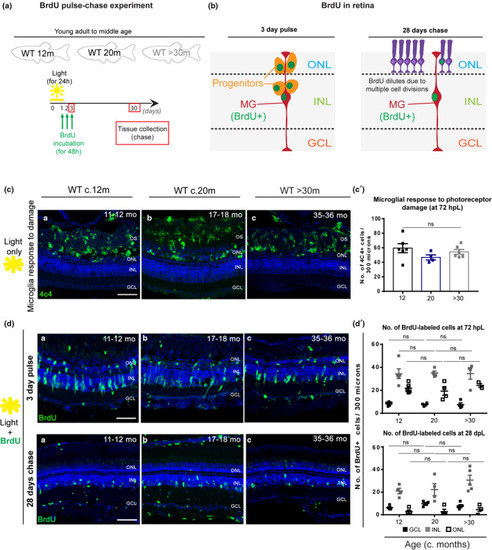FIGURE 6
- ID
- ZDB-FIG-220420-41
- Publication
- Martins et al., 2022 - Müller Glia maintain their regenerative potential despite degeneration in the aged zebrafish retina
- Other Figures
- All Figure Page
- Back to All Figure Page
|
Zebrafish MG regenerative capacity upon acute damage is maintained in old age. (a) Schematic image of the experimental design and (b) expected results. Fish were light‐treated for 24 h and BrdU incorporation occurred between 24–72 h (green), which allowed for BrdU to be washed out the proliferating progenitors, leaving only MG which re‐entered the cell cycle to be labelled. (c) The central retina labelled with 4C4 (microglia, in green), after light treatment, in adults (c. 12 months), middle aged (c. 20 months) and old (>30 months) |

